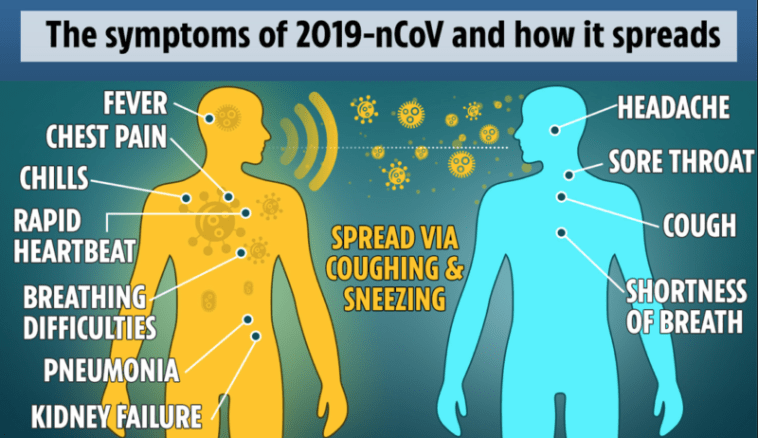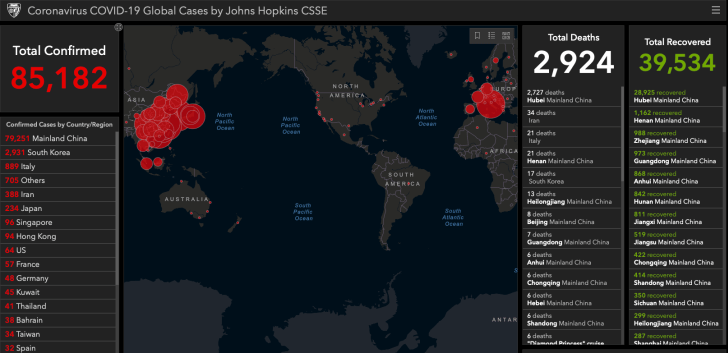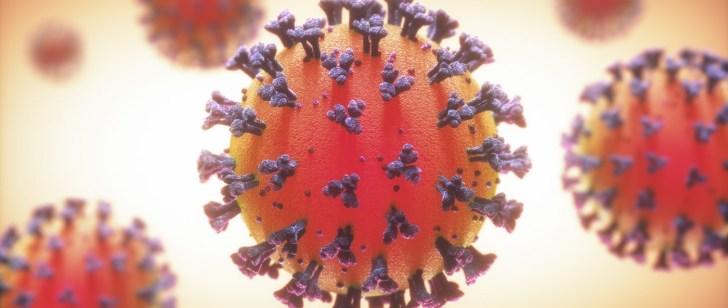“I Knew My Number Was Up” – An American Coronavirus Patient Speaks Out
We are starting to get personal accounts from people who are experiencing the illness caused by the novel coronavirus. While there is certainly cause to be skeptical, considering all the rhetorical hyperbole versus the real effect of the outbreak on world markets and events, pieces like what follows do seem to give consistent information. So, without further ado…
This is reprinted from the original piece from the Washington Post, as presented by the Stamford Advocate, dated 28 February 2020: (Carl Goldman, to the Washington Post, writes:)
I have the coronavirus. And it hasn’t been that bad.
I am in my late 60s, and the sickest I’ve ever been was when I had bronchitis several years ago. That laid me out on my back for a few days. This has been much easier: no chills, no body aches. I breathe easily, and I don’t have a stuffy nose. My chest feels tight, and I have coughing spells. If I were at home with similar symptoms, I probably would have gone to work as usual.
I caught the virus on the Diamond Princess, the cruise ship that was quarantined outside Yokohama for 14 days, at the end of a 16-day cruise I took with my wife, Jeri. When I left the ship a couple of weeks ago, I felt fine. We checked our temperatures throughout our quarantine. Jeri and I got a swab test for the virus. Our temperatures were normal; they’d get the swab results back in 48 hours. Our test results had not arrived before we boarded buses for the airport, where two U.S. government planes waited for us.
As we took off from Tokyo, I had a bit of a cough, but I chalked it up to the dry air in the cabin. I felt pretty tired – but who wouldn’t, in our situation? I dozed off.
When I woke up, I had a fever. I made my way to the back of the cargo plane, where the Air Force had set up a quarantine area cordoned off with sheets of plastic. They took my temperature. It was over 103 degrees. So I took a seat in the quarantine area and fell back asleep until we touched down in California, at Travis Air Force Base.
Officials from the Centers for Disease Control and Prevention came onto the plane and said that three of us who had been cordoned off would fly to Omaha (with our spouses, if they wanted to come along). The CDC had a quarantine location at the University of Nebraska’s hospital. We arrived on Feb. 17, greeted by a fleet of ambulances and police cars. Officials put me on a stretcher and wheeled me into a van, which made for a very dramatic scene. I easily could have walked despite my exhaustion.
On the hospital campus, they put me in a biocontainment unit. The space was sealed off, with two double-paned windows that looked out on the hallway, and a large, heavy, insulated door. Two cameras watched me at all times; a set of computer monitors were equipped with microphones, so that the medical staff and I could communicate with CDC officials at central command down the hall. The room had last been used for the Ebola outbreak in 2013.
A doctor and nurses reviewed my case with me and took a bunch of lab tests. They wore heavy-duty hazmat suits sealed with duct tape and equipped with motors that helped with air circulation. It looked like something out of “The Andromeda Strain.” When the test came back a few hours later, I wasn’t surprised to learn that I had the coronavirus. Later, the Tokyo swab confirmed the result – I had caught the virus even before I left the ship.
It didn’t scare me too badly. I knew my number was up. The way I saw it, I was going to get stuck in at least 14 more days of quarantine, even if I didn’t get the virus. So many fellow passengers had come down with the illness, including one of my friends, that I’d gotten somewhat used to the idea that I might catch it, too. My wife, however, tested negative and headed to quarantine at a separate facility a few blocks away. After those days being cooped up on the ship together, I think we both relished the alone time; we still could communicate through our phones.
3D Rendering of Coronavirus
During the first few days, the hospital staff hooked me up to an IV, mostly as a precaution, and used it to administer magnesium and potassium, just to make sure I had plenty of vitamins. Other than that, my treatment has consisted of what felt like gallons and gallons of Gatorade – and, when my fever rose just above 100 degrees, some ibuprofen. The nurses came to the room every four hours or so, to check my vitals, ask if I needed anything and to draw my blood. I got very good at unhooking all the monitors checking my oxygen level, blood pressure and heart rate so I could go to the bathroom or just pace around the room a little, to get my blood flowing. I never quite got the hang of hooking them back up without making a tangled mess. After 10 days, I moved out of biocontainment and into the same facility as Jeri. Now we can videochat from our separate quarantines, in neighboring rooms.
As of my most recent test, on Thursday, I am still testing positive for the virus. But by now, I don’t require much medical care. The nurses check my temperature twice a day and draw my blood, because I’ve agreed to participate in a clinical study to try to find a treatment for coronavirus. If I test negative three days in a row, then I get to leave.
The time has passed more quickly than I would’ve expected. With my laptop, I get as much work done as I can, remotely. I catch up with friends. I take walks around my room, trying to take a thousand more steps each day. I also watch the news. It’s surreal to see everyone panic – news conferences, the stock market falling, school closures – about a disease I have. It does seem likely that coronavirus will spread in the U.S., but it won’t help anybody if we all panic. Based on my experience, I’d recommend that everyone get a good digital thermometer, just as a comfort tool, so they can reassure themselves if their noses start running. I have been relatively fortunate: At least six Diamond Princess passengers have died from the virus, of the around 705 passengers who caught it. But coronavirus doesn’t have to be a horrible calamity.
If you told me when I left home in January that I wouldn’t be back until March – that, instead, I would be confined for more than 24 days because I’d catch a novel virus at the center of what could become a pandemic – that would have completely freaked me out. But now that it’s happening, I’m just taking it one day at a time.
* * *
As told to Washington Post editor Sophia Nguyen.
Tyler Durden
Sat, 02/29/2020 – 13:45


